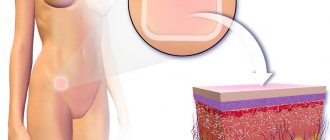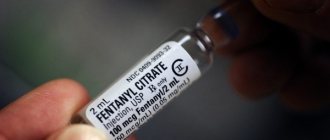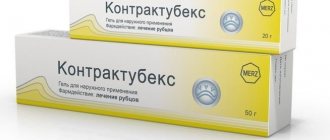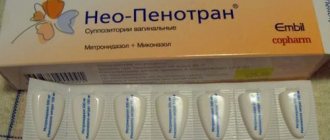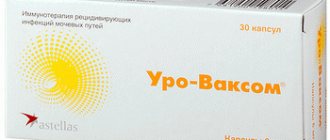Contraindications
A contraindication to the use of the Versatis patch may be increased sensitivity of various origins to the drug and components.
Also, you should not use the drug if you are allergic to local anesthetics of the amide group (such as bupivacaine, etidocaine, mepivacaine, prilocaine).
Versatis is contraindicated in cases where there is inflammation or damage to the integrity of the skin at the sites where the patch is applied (for example, herpetic rashes, atopic dermatitis, wounds of various etiologies).
Versatis should be used with caution in cases of severe cardiac, renal or hepatic impairment. Lidocaine has the ability to cross the placenta, and small amounts may pass into breast milk. There are no data on the use of lidocaine during pregnancy and lactation, so the drug should be used based on the combination of expected benefit and potential harm.
Versatis is not indicated in pediatric practice under 18 years of age.
Side effects
On the part of the immune system, the development of allergic contact dermatitis , manifested in the form of hyperemia at the site of application, skin rash , urticaria , itching , and there have also been cases of burning of the area of the skin exposed to the drug. Cases of angioedema .
Mode of application
The patch is applied externally. The patch is attached to the skin in the area of pain once a day for up to 12 hours. In this case, no more than 3 patches can be used at a time. If necessary, the patch is cut into pieces before removing the plastic protective film. The patch can be applied to dry, intact, non-inflamed skin (after complete healing of herpetic rashes) covering the area of pain. After the period of permissible use has expired, the patch is removed and a break of at least 12 hours is taken.
Reused patches are not used. The patch must be attached to the skin immediately after it has been removed from the sachet and the film from the adhesive layer has been removed. The hair is cut with scissors (do not shave). The effectiveness of Versatis is re-evaluated 2-4 weeks after the start of therapy with a local form of lidocaine.
If the therapeutic effect is insufficient within this period, treatment is stopped. The effectiveness of therapy should be assessed regularly to determine the optimal number of patches applied at one time required to cover the area of pain.
After applying the patch, it is recommended to immediately wash your hands and avoid contact of hands with eyes and mucous membranes. After use, the patch should be discarded as it contains a certain amount of active substance. The used patch should not be accessible to children or pets.
Versatis
Locally, externally.
Dosed spray of the drug for local use: in dentistry, otolaryngology - 1-4 doses, for endoscopic and instrumental research methods - 2-3 doses, in obstetrics - 15-20 doses, gynecology - 4-5 doses, dermatology - 1-3 doses . The maximum dose is 40 doses/70 kg body weight. In dental practice in children, it is preferable to use it as a lubricant (to avoid frightening the patient when sprayed) by pre-impregnating a cotton swab.
Aerosol dosed for topical use: in dentistry for adults - 20 mg (2 doses), maximum dose - 30 mg (3 doses) over 1.5 hours or 200 mg (20 doses) over 24 hours; children - up to 3 mg/kg.
Gel for external use: applied to the skin surface as needed 3-4 times a day.
Gel of the drug for local use: for anesthesia of the mucous membrane of the esophagus, larynx, trachea, lubricate the outer surfaces of instruments intended for research; for superficial anesthesia of the oral mucosa, apply 0.2-2 g of gel with a sterile glass rod or a sterile cotton swab soaked in the gel; if anesthesia is insufficient, repeat after 2-3 minutes; the maximum dose for adults in 12 hours is 300 mg (6 g of gel); in urology for women - 3-5 ml of 2% gel lubricate the urethral mucosa before examination, for men before catheterization - 100-200 mg (5-10 ml of 2% gel), before cystoscopy for filling and dilatation of the urethra - 600 mg (30 ml 2 % gel) in 2 doses with an interval of several minutes (the distal urethra is temporarily clamped). The maximum dose is 600 mg (30 ml of 2% gel) for 12 hours. Children - up to 4.5 mg/kg.
TTS is applied to the painful surface for 12 hours, then a 12-hour break is taken. You can apply no more than 3 TTS at the same time. After applying the drug, do not touch your eyes and wash your hands.
In dentistry, to anesthetize the injection site, the drug gel is applied to the mucous membrane in the area of subsequent infiltration anesthesia at intervals of 2-3 minutes; for anesthesia when removing tartar, the gel is rubbed into the gingival margin and necks of the teeth for 2-3 minutes, after which the procedure is carried out; as a therapeutic dressing after removing tartar or curettage, the gel is applied to the gingival margin and fixed; in the form of applications, it is applied several times a day to the oral mucosa at the sites of aphthae and erosions.
Side effects
Adverse reactions were observed in approximately 16% of patients prescribed Versatis. Due to the external use of the drug, usually adverse reactions are local in the area of application of the patch. Most often: erythema, rash, itching, burning, dermatitis at the application site, skin damage.
During the clinical use of Versatis in cases of postherpetic neuralgia, skin reactions were most often observed at the site of attachment of Versatis.
In the post-marketing use of Versatis, adverse reactions were observed, rarely anaphylactic phenomena, hypersensitivity, and violation of the integrity of the skin. All side effects were mild or moderate in intensity. In less than 5% of cases, the development of adverse reactions was the reason for discontinuation of the drug.
When used correctly, the development of systemic side effects is unlikely, since when treated with Versatis containing 5% lidocaine, the entry of the active substance into the bloodstream is insignificant. Systemic adverse reactions associated with the use of lidocaine are identical to those characteristic of local anesthetics of the amide group.
If any of these adverse reactions or other side effects occur, you must report them to your doctor.
Overdose
An overdose when using the Versatis patch is extremely unlikely. However, an overdose can occur if Versatis is used incorrectly (applying more than 3 patches at the same time, or applying the patch for more than 12 hours, as well as using the patch on damaged areas of the skin).
Symptoms of overdose are: drowsiness, vomiting, convulsions, dilated pupils, dizziness, bradycardia, arrhythmia, shock reactions. In case of overdose, interaction of lidocaine with antiarrhythmic drugs, adrenoblockers, inhibitors of the CYP3A4 isoenzyme (imidazole derivatives, macrolides) is possible.
In case of overdose, the patch must be urgently removed from the skin and measures taken for symptomatic therapy. There is no antidote to lidocaine.
Pharmacodynamics and pharmacokinetics
Versatis contains a local anesthetic - lidocaine , which is an acetamide with membrane-stabilizing activity and the ability to block sodium channels in excitable neuronal membranes. When used topically on undamaged skin, the expected therapeutic effect occurs - pain , without systemic influence.
Pharmacokinetic data
Approximately 3±2% of lidocaine from the total amount contained in the patch is adsorbed. Achieving a maximum blood concentration of 0.13 mcg/ml is possible by applying 3 patches over 12 hours. Binding to plasma proteins occurs by 50-80%.
Distribution is rapid (the half-life of the distribution phase lasts 6-9 minutes) begins with penetration into well-supplied tissues, then into adipose and muscle tissue.
Lidocaine is able to penetrate the blood-brain and placental barriers and is excreted in breast milk (approximately 40% of the concentration in a woman’s blood plasma). Metabolism occurs in the liver by 90-95%, taking into account the action of microsomal enzymes until the formation of pharmacologically active metabolites . Excretion through the kidneys and bile , with up to 10% eliminated unchanged.
Features of pharmacokinetics in special groups of patients
- In persons with liver disease, the metabolic rate is reduced to 10-50% of the normal value.
- With chronic renal failure , accumulation of metabolites is possible, while acidification of urine causes an increase in the excretion of lidocaine .
special instructions
When using Versatis, no significant interactions with other drugs were observed due to the low systemic absorption of lidocaine. However, it is important to exercise caution when using Versatis in patients receiving class I antiarrhythmic drugs (tocainide, mexiletine, etc.) or other local anesthetics, since the possibility of a systemic effect cannot be excluded.
The patch contains propylene glycol, which in some cases causes skin irritation, as well as parahydroxybenzoates, which in some cases cause allergic reactions of various types, including delayed ones. Versatis is not used on mucous membranes.
Due to minimal systemic absorption, the drug does not affect the ability to drive a car or operate machinery.
Composition and release form
This is a local anesthetic substance containing one active ingredient - lidocaine, in an amount of 700 mg per patch.
The dosage form also contains excipients that help release the active substance and distribute it on the skin:
- glycerol;
- gelatin;
- purified water;
- propylene glycol and many others, including those included in the non-woven coating of the patch and the adhesive layer.
The patch itself looks like an object containing a protective coating (non-woven type) and an adhesive (sticky) layer in which the medicinal substance is distributed. The sticky layer adheres tightly to the skin, holds the patch on the skin and helps the drug penetrate through the skin into the body. It contains lidocaine at a concentration of 5%, and the patches themselves have different sizes:
| Width | Length |
| from 9.5 cm to 10.5 cm | from 13.3 cm to 14.4 cm |
This helps the patient choose a medicine depending on the size of the pain area that needs to be covered.
Analogues of the product
“Versatis” is a patch that has undergone various studies. One of the institutions that identified the specific effects of the drug is the Ural Medical Center. Its scientists have proven the effectiveness of the current composition and safety when prescribed correctly.
Currently, transdermal therapy is used to treat many patients using their own developed methods.
It is also noted that an analogue of the Versatis patch exists. It is used to treat inflamed joints, to relieve pain in the back and in the treatment of a diseased spine. The following agents can be used as a substitute for lidocaine from a series of transdermal therapy:
- pepper stickers that have a distracting effect;
- “Voltaren” - diclofenac-based cream;
- magnetic patches (China);
- “Nanoplast”.
Lidocaine is used by doctors to numb a small area of the body and is a local anesthetic. The substance is a colorless and odorless liquid. Its action is based on:
- on blocking nerve endings and sodium channels;
- removal of salts;
- relieving swelling.
However, an overdose risks side effects. It is important to consider that the drug is able to penetrate the placental barrier. It has been proven that the use of such anesthesia leads to delays in fetal development.
“Versatis” patch has a unique composition. The instructions for analogues show that only Voltaren has an analgesic effect similar to lidocaine. Other drugs act based on the release of heat or with the help of natural ingredients (pepper).
Analogs
Level 4 ATX code matches:
Markain
Scandonest
Emla
Naropin
Lidocaine
Ubistezin
Ultracaine D-S Forte
Ultracaine D-S
Ultracaine
Artikain
It is possible to use Lidocaine in other forms:
- 10% spray, a package of Lidocaine 38 g will cost 360-400 rubles;
- 10% solution for injection, 10 ampoules of 2 ml - approximate cost 29-40 rubles.
